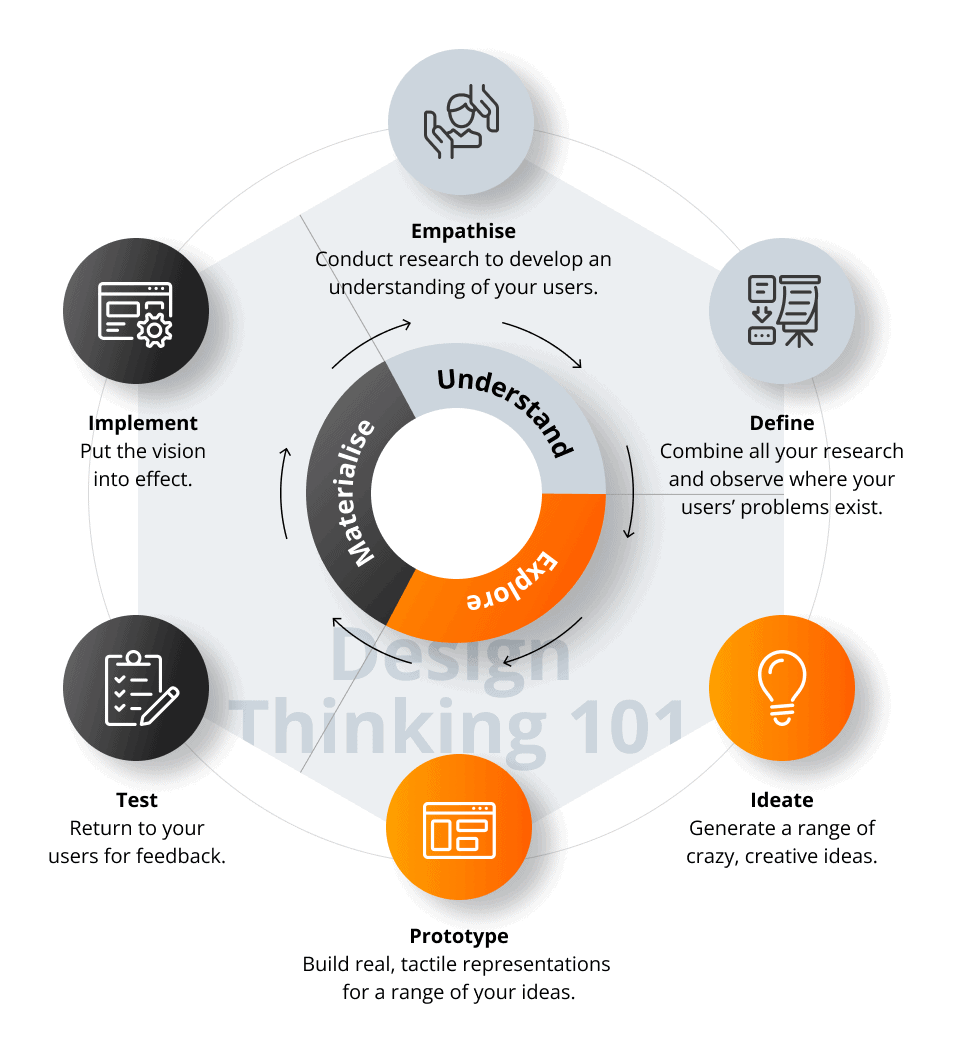
The complete guide to developing an effective R&D strategy for enterprises
In today’s competitive world, every business that aims at staying ahead of the competition needs to have an effective R&D strategy. Our Complete Guide to Developing an Effective R&D Strategy will give you plenty of info on how to go about launching it!
What is research and development strategy?
R&D (which stands for research and development), is defined as a set of activities companies undertake to create new products, introduce new services, and make their existing offer innovative and better.
In contrast to other business activities, R&D strategy is not expected to bring immediate profit – it works as an innovation engine for the whole enterprise and aims at giving long-term advantages to the whole organisation.
Why is R&D strategy so important for enterprises?
R&D provides businesses with knowledge and insights that facilitate innovation and growth.
Given the competitiveness of today’s market, being innovative is vital for every company that wants to stay ahead of their competitors and create products and services that sell.
According to McKinsey, in 2019 alone businesses around the world spent $2.3 trillion on R&D, while the annual investment in R&D activities has been growing at approximately 4% per year over the last decade.
This huge investment in research and development is characteristic for all companies, no matter which sector they represent. The industries that spend most on their innovation are pharma, high tech, and telecom, but all others are also doing what they can to make their corporate strategy effective.
How do you develop an R&D strategy?
Having a research and development team and investing in it is not enough. Businesses often fail in their R&D ventures because they lack an effective R&D strategy that helps them achieve their goals. But making R&D strategy effective is not as simple as it looks.
Apart from having enough funds to facilitate it, it is crucial to make it a central part of the organisation’s mission and IT strategy. Only such a holistic approach will bring tangible results, giving businesses clarity and agility to make their projects come true.
Before you start developing your R&D strategy it is important to know the main challenges that lay ahead of it, so that you can avoid them within your business.
Some crucial steps you should take to develop an effective R&D strategy include:
understanding business objectives,
conducting a technology assessment,
understanding which new technologies to use,
conducting market research to identify industry trends, customer needs and competition,
defining R&D goals and priorities for long term growth,
allocating resources,
building a team and establishing your KPIs,
creating a roadmap,
encouraging a data-driven culture of innovation, experimentation and collaboration.

Types of R&D Strategies
There are many different types of R&D strategies and the decision which should be used depends on the company that is going to do it and on the results it is after.
Here is a quick overview of the most common types:
Basic Research
Basic research focuses on fundamental scientific exploration and understanding. Its goal is to expand knowledge in a particular field without immediate commercial applications. It often lays the groundwork for future developments.
Applied Research
Applied research aims at addressing specific practical problems or challenges. It takes the knowledge gained from basic research and applies it to develop solutions for real-world issues.
Development research
Development research involves the refinement and improvement of existing products, processes, or technologies. It aims to enhance performance, efficiency, or functionality based on the knowledge gained through previous R&D efforts.
Read more about organisational development:
The ultimate guide to Project Management: strategies, tools and insights
Team Leader development: 5 factors to take under consideration
3 strategies focused on creating value for the client [Future Processing example]
Innovative research
Innovative research focuses on creating entirely new products, services, or technologies. It often involves thinking outside traditional boundaries and exploring unconventional approaches to solving problems.
Other types of R&D strategies
There are also other types of R&D strategies you may use depending on your goals, industry context, cutting-edge technology in software development and competitive landscape.
In many cases, a combination of these strategies may be employed to create a comprehensive and effective R&D approach.
The benefits of R&D strategic planning
Research and development brings several key benefits that are crucial for the overall success of businesses. It allows for innovation and technological advancement by encouraging a systematic approach to innovation. It helps create a competitive edge in the market.
Strategic R&D planning allows organisations to respond quickly to changing market trends, customer preferences, and industry dynamics. It also allows to identify and address potential risks early in the development process.
Because of its efficiency it allows for better effectiveness and costs savings, it enhances productivity and collaboration and allows for a faster time-to-market.
It also enhances customer relationship and helps create attractive work places, focused on cutting-edge projects, meaningful innovations and competitive advantage on the market.

The main challenges for a research and development team
But, as it often happens, advantages cannot exist without challenges.
Here are some to take into consideration when it comes to Research and Development Strategy:
The speed of the innovation cycles.
As you read this text, millions of dollars around the world are being put into extensive research, making it one of the most competitive activities businesses can go for.
The speed of innovation cycles keeps growing, so becoming competitive on time is simply tricky.
The lack of connection between the R&D groups and the customers.
R&D departments tend to be isolated from customers, while the most important factor of a successful R&D is to be always in touch with the end-clients to come up with solutions that respond to their needs.
The difficulty in measuring the success.
As R&D work is complex and does not bring immediate results, it is often difficult to measure its success.
It is therefore worth keeping a close eye on the progress of the R&D team and apply clear metrics when it comes to evaluating it.
The costs.
R&D requires upfront cash and limited budgets can restrict the resources available for R&D initiatives, including funding for research activities, hiring skilled personnel, and acquiring necessary technology and equipment.
Things to take into consideration when planning to introduce research and development activities
When you start thinking about introducing R&D into your business, there are several things you should take into consideration.
The most important of them are as follows:
Create a strategic framework
Implementing an R&D strategy requires a framework you will stick to. Think which aspects of the business you need to focus on, decide on your goals and deadlines.
That’s done, concentrate on your approach and the way you are going to achieve your goals, measure your success and report the milestones.Assign a team
You cannot have a successful R&D if you don’t have a team responsible for developing it. If you are a smaller business, you can start with adding some additional R&D tasks to your existing employees’ workload.
Another good solution is to outsource your R&D to an external and experienced partner. Such a collaboration should start with a discovery workshop which allows to evaluate, design, and plan your project.
The next option is to organise product design workshops, which will help you transform your idea into a product that attracts users.Test your solutions
No matter what kind of innovation you introduce, you need to regularly test new ideas on your customers. Such an approach will allow you to understand how to go ahead with your research and which of the innovative solutions are worth pursuing.
How Future Processing can elevate your enterprise’s R&D strategy?
R&D has a massive potential for businesses across all industries. But the ever-growing competition coupled with rapid changes in technologies and in customers’ expectations make it a pretty complex job. It’s easy to feel lost.
This is why a great solution is to collaborate with an experienced external partner that can elevate your enterprise’s R&D strategy.
At Future Processing we have been working with numerous companies of all sizes, helping them get it right. No matter what are you plans and goals, do get in touch. We will be happy to look into your particular case and help you achieve your goals!




